Duncan Coral; Whister Coral; Daisy Coral
Duncanopsammia axifuga
The long heavily calcified tubular corallites of this species make it very conspicuous but it is rarely encountered. Individual polyps are large (~1 – 1.5cm in diameter), hence each branch that arises from a broad central attachment generally contains a limited number of polyps (>15). The corallite contains a deeply seated broad columellae. Three cycles of septa are developed in a Pourtalés plan and the first cycle of 12 primary septa are exert. The oral disc is green, blue, grey and tentacles are often extended during the day.
Morphology
Tubular branching.
Evolution
Species age estimated to be 3.269 mya.
Behaviour
A zooxanthellate coral meaning that single-celled dinoflagellate algae live symbiotically within the endodermal cells of the coral’s tissue. The zooxanthellae photosynthesise and the excess oxygen and sugars they produce provides energy and nutrition to the coral. When the polyp extends its tentacles it bears resemblance to an anemone and it is a voracious heterotrophic feeder. This species often hosts commensal organisms such as barnacles which can occur on the coenosteum or septa. Duncanopsammia axifugais a relatively unaggressive coral and a relatively poor competitor.
Habitat
Marine
Intertidal reef edge habitats; submerged reef slopes; shallow sandy substrates amongst macroalgae (0-30m).
Distribution
Central Indo-Pacific, primarily Australia.
| Kingdom: | Animalia |
|---|---|
| Phylum: | Cnidaria |
| Class: | Anthozoa |
| Subclass: | Hexacorallia |
| Order: | Scleractinia |
| Family: | Dendrophylliidae |
| Genus: | Duncanopsammia |
| Species: | axifuga |
| Name Published Year: | 1848 |
|---|---|
| Rank: | species |
| Scientific Name Authorship: | Milne Edwards & Haime |
| Commercial Impact: | Popular in the aquarium industry |
| Conservation Assessment: | Near Threatened |
Cite this page
Western Australian Museum Collections https://museum.wa.gov.au/online-collections/names/duncanopsammia-axifuga
Accessed 24 Sep 2025
Rights
We support the open release of data and information about our collections.
Text content on this page is licensed under a Creative Commons Attribution 4.0 International License.
Image content on this page is copyright WA Museum.


